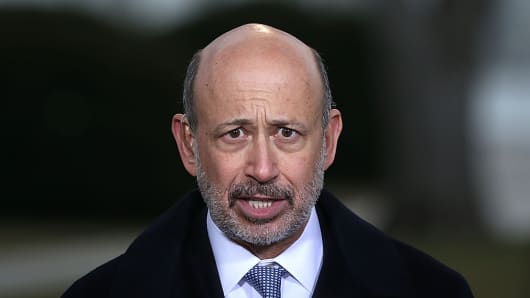Julia LaRoche breaks the news that Goldman is going to name new managing directors every other year instead of every year.
According to the contents of the memo, which have been confirmed by Goldman, the bank will start selecting its managing director class every two years.
The bank usually selects new MDs every year.
According to the memo, ever since Goldman starting tapping managing director classes every year beginning in 1996 it was intending to move to a biennial selection when they reached "critical mass of managing directors at the firm."
"A biennial process will allow us to invest more in the managing director selection process so that it will continue to be a disciplined and rigorous exercise. This will help to ensure that the managing director title remains as aspirational as it should be for our top performers," the memo states.
The biennial selection process for managing directors will start after the 2013 class is announced.
The official line inside of Goldman is that they always intended to move to biennial selection but just never got around to it. Or maybe just did not feel like they had a full roster of managing directors to satisfy client demand for senior people staffed to deals, portfolios, and trading desks. Certainly it is true that the firm's management felt strained in the years when they were selecting both new partners and new managing directors.
This change will put enormous pressure on those selecting the class of 2013. In the past, vice presidents passed over in any year would know that they had a chance the next year. Now they'll have to wait two years. What's more, there will be more eligible vice presidents competing to be managing directors in 2015.
It will be interesting to see if Goldman attempts to compensate for this in 2013 by naming an extraordinarily large class of managing directors, rushing forward the promotion of some of the people who might not have made it until the following year. This probably won't happen for most candidates. But you could see some of the best talent wind up benefiting from the biennialization.
One thing that's unclear is whether Goldman plans on naming twice as many managing directors, compensating for the decline in frequency of selection by increasing the volume. The answer is: probably not. Which means that the result of this decision is likely to be a decline in the number of managing directors named over, say, a five-year period.
Goldman always insists that this isn't really the way to look at things. It promotes based on market conditions and quality of the talent pool, the firm says. So it doesn't think it makes sense to speculate about the size of future classes of managing directors or partners.
While it's tempting to say this is hogwash, this way of thinking actually comports nicely with Goldman's general approach to markets. Goldman has long insisted that its special quality isn't an ability to predict the future but to react agilely to changing market conditions.
At the very least, there is likely to be a strange blip in Goldman's compensation costs in 2015. The previous year, there will have been no new managing directors named. This should keep down Goldman's compensation that year, increasing earnings. If you are the type to believe that Goldman has a crystal ball, you might wonder if Goldman is anticipating needing an earnings boost that year. Perhaps it's a call on the end of zero-interest rates. (Probably not.)
Despite denials at Goldman that this is about cost-cutting, I suspect that over time the effect will be to further what I have been calling "internal deleveraging."
Senior staffers, from vice presidents to nonpartnership directors, are a form of fixed costs at the firm—operating a lot like debt instruments.
Wall Street firms describe their people as "human capital." But in many ways, they are more like "human debt." They enable a firm to perform better than the actual capital—the senior MDs and partners—would alone. The return on "equity"—that is, the profits going to senior executives—is greater because the MDs and VPs don't receive as great a share of the profits. But when profits are low, they drain income from senior executives.
Reduced compensation at all levels exacerbated this problem. With senior executives receiving lower levels of compensation than they did before the crisis, there is a tendency to stay on longer. This means there are fewer opportunities for the middle ranks to move up—and thus fewer incentives for them to become profit centers rather than cost centers.
Another change in compensation—the move away from annual bonuses and toward higher fixed salaries—has made this problem even more acute.
It is now much harder to reduce the compensation costs of the upper-middle ranks of an investment bank based on a firm's annual performance. Gone are the days when all a firm had to do was slash bonuses in a tough year. Salaries have become much more akin to debt service.
Finally, a third compensation switch may also be a contributor toward this trend. Firms have been compensating employees with larger levels of equity instead of cash. Many firms, however, believe that their shares are currently underpriced. Awards and options granted now will be costly if prices rise in the future. What's more, in order to avoid diluting existing shareholders, firms may need to buy back stock when equity compensation grants vest. Paying middle-ranked executives with costly equity may simply be a price too dear for some firms.
So when firms start letting managing directors and vice presidents go, it is a form of deleveraging. They are reducing their exposure to the high-fixed costs of middle-ranks.
Shareholders at Goldman should be pleased.
Follow me on Twitter @Carney



